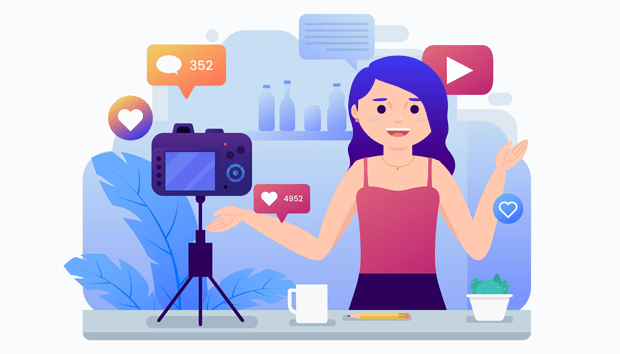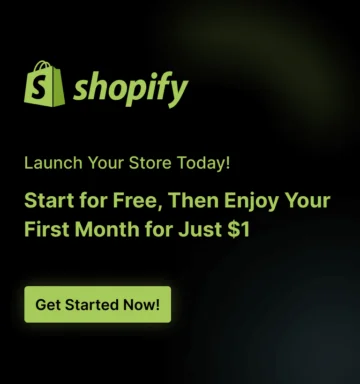While traditional advertising still has its place, a powerful force has emerged that connects brands with engaged audiences in an authentic, impactful way: influencer marketing for Shopify.
This strategy leverages the reach and trust of content creators to promote your products, build brand awareness, and ultimately, drive sales for your Shopify store.
It’s not just a trend; it’s a fundamental shift in how consumers discover and buy products.
In fact, the global influencer marketing market is projected to grow by 35.63% from 2024 to 2025 alone, significantly outpacing traditional advertising growth rates. (Source: Social Snowball).
This comprehensive guide will equip you with the knowledge and actionable strategies to harness the power of influencer marketing for shopify to outrank competitors and establish your brand’s authority.
Key Takeaways:
- Uncover the Untapped Potential: Discover why authentic connections, not just follower counts, are the secret sauce to skyrocketing your Shopify sales through influencers.
- Master the Art of Discovery: Learn how to pinpoint the perfect content creators who genuinely resonate with your target audience and amplify your brand message.
- Budgeting for Success: Find out how to strategically allocate your resources to maximize your return on investment in the ever-evolving world of influencer collaborations.
- Beyond the Initial Sale: Explore how influencer marketing can build lasting brand loyalty and create a community of passionate advocates for your Shopify store.
- Data-Driven Decisions: Understand the crucial metrics that reveal the true impact of your influencer campaigns and guide your future strategies.
Understanding Influencer Marketing for Shopify

Shopify influencer marketing is a strategic approach where businesses partner with individuals who have a dedicated following on social media platforms or blogs to promote their products or services.
For Shopify store owners, this translates to collaborating with creators who can genuinely showcase their products to an engaged audience, driving traffic and conversions to their online stores.
It’s about leveraging the trust and credibility an influencer has built with their followers, offering a more organic and relatable form of advertising than traditional methods.
The effectiveness of Shopify influencer marketing is undeniable. A 2024 survey by Shopify revealed that 73% of U.S. merchants considered social media engagement their top strategy for maintaining customer relationships (Business Insider).
This underscores the critical role influencers play in today’s e-commerce landscape.
When done right, it can significantly reduce customer acquisition costs and boost revenue, as demonstrated by brands like Duradry, who saw a 29% decrease in CAC using Shopify Collabs, and Solgaard, who achieved an average 287% month-over-month growth in revenue from creator-driven sales. (Source: StackInfluence).
Recommended Blogs for You:
👉 Facebook Ads for Shopify: Complete Marketing Guide 2025
👉 Content Marketing for Shopify: Complete Strategy Guide
👉 Google Ads for Shopify: Complete Campaign Guide
👉 Technical SEO for Shopify: Complete Optimization Guide
👉 Best Email Marketing Apps for Shopify in 2025
Crafting Your Shopify Influencer Marketing Strategy
A successful Shopify influencer marketing strategy isn’t about haphazard outreach; it’s about meticulous planning and execution.
Setting Clear Goals and Defining Your Audience
Before you even begin searching for influencers, clearly define what you want to achieve with your Shopify influencer marketing campaign. Are you aiming for:
- Increased Brand Awareness? This focuses on getting your brand name and products in front of a wider audience.
- Driving Sales and Conversions? This prioritizes direct purchases through unique links or discount codes.
- Generating User-Generated Content (UGC)? This involves encouraging influencers and their followers to create content featuring your products.
- Boosting Website Traffic? This aims to direct more visitors to your Shopify store.
- Building a Community? This focuses on fostering long-term relationships and brand loyalty.
Once your goals are clear, identify your target audience. Who are you trying to reach? What are their demographics, interests, and online behaviors?
The more specific you are, the better you can align with influencers whose audience mirrors your ideal customer.
Identifying the Right Influencers for Your Shopify Store
Finding the right influencers is paramount to your Shopify influencer marketing success. It’s not just about follower count; authenticity and audience relevance are key.
Types of Influencers:
- Nano-influencers (1,000-10,000 followers): These individuals typically have highly engaged, niche communities. They often offer the highest engagement rates (averaging 2.19% on Instagram) and are more affordable, making them excellent for building authentic connections and driving conversions within specific segments. (Source: Impulze.ai).
- Micro-influencers (10,000-100,000 followers): Balancing reach and engagement, micro-influencers are often preferred by marketers (81%) due to their relatable content and strong community ties. (Source: Social Snowball).
- Mid-tier influencers (100,000-500,000 followers): These influencers offer significant reach while still maintaining a good level of engagement.
- Macro-influencers (500,000-1 million followers) & Mega-influencers (1M+ followers): These influencers have a broad reach and can generate considerable brand awareness, though their engagement rates tend to be lower, and costs are significantly higher.
Where to Find Influencers:
- Social Media Platforms: Directly search hashtags relevant to your products or industry. Look for users consistently creating high-quality content that aligns with your brand’s aesthetic.
- Google Search: Perform targeted searches like “best [your niche] influencers” or “[your product category] content creators.”
- Influencer Marketing Platforms: Tools like Shopify Collabs, GRIN, Upfluence, NeoReach, and Modash (which offers direct Shopify integration for product orders and tracking) streamline the discovery process. These platforms allow you to filter by niche, audience demographics, engagement rates, and more, providing valuable insights before outreach. Shopify Collabs, in particular, simplifies outreach, tracking, and payments for merchants, making it an excellent resource for Shopify influencer marketing.
Crafting a Compelling Outreach Strategy
Once you’ve identified potential influencers, a personalized and professional outreach is crucial.
- Personalization is Key: Avoid generic templates. Reference specific content they’ve created, explain why you admire their work, and clearly articulate why their audience would be a good fit for your products.
- Clearly Define the Offer: Be transparent about compensation (gifting, payment, commission-based affiliate programs, or a hybrid model), deliverables, and timelines.
- Provide a Brief: Offer a clear content brief outlining your brand guidelines, essential talking points, desired hashtags, and any specific product features you want highlighted. However, allow for creative freedom – influencers know their audience best.
- Showcase Your Brand: Share your brand’s mission, values, and what makes your products unique. This helps influencers genuinely connect with your brand.
Campaign Execution: Bringing Your Shopify Influencer Marketing to Life
With your strategy in place and influencers on board, it’s time to execute your Shopify influencer marketing campaigns.
Content Collaboration and Approvals
Foster a collaborative environment. While providing a brief is important, trust the influencer’s creative expertise. They understand their audience’s preferences and what kind of content performs well. Establish a clear approval process for content to ensure brand alignment without stifling creativity.
Tracking and Measuring Performance
Measuring the return on investment (ROI) of your Shopify influencer marketing efforts is crucial for optimizing future campaigns.
Key Metrics to Track:
- Sales and Revenue: This is often the most direct measure. Utilize unique discount codes, affiliate links (Shopify Collabs excels here), or UTM parameters to attribute sales directly to specific influencers.
- Engagement Rate: Monitor likes, comments, shares, and saves. High engagement indicates that the content resonates with the audience. The average engagement rate across platforms varies, but typically, anything between 1% and 5% is considered good. (Source: The Right Fit).
- Website Traffic: Use Google Analytics to track referral traffic from influencer links. Look at metrics like clicks, click-through rate (CTR), time on site, and bounce rate.
- Brand Awareness: Track brand mentions, hashtag usage, impressions, and reach. Social listening tools can help monitor sentiment analysis to understand how your brand is perceived.
- Follower Growth: Monitor increases in your social media followers or email subscribers during and after the campaign.
- Cost Per Acquisition (CPA) & Return on Ad Spend (ROAS): Calculate how much it costs to acquire a new customer through influencer marketing and the revenue generated for every dollar spent on the campaign. For example, if you spend $5,000 on a campaign and earn $10,000 in sales, your ROI is 100%. (Source: HypeAuditor).
Budgeting for Shopify Influencer Marketing
Influencer marketing costs can vary significantly depending on the influencer’s tier, platform, content type, and campaign duration.
- Nano-influencers: Can range from $10 to $100 for an Instagram post, or $5 to $25 for a TikTok video.
- Micro-influencers: Might charge $100 to $500 for an Instagram post, or $25 to $125 for a TikTok video.
- Mid-tier influencers: Could range from $500 to $5,000 for an Instagram post, or $125 to $1,250 for a TikTok video.
- Macro-influencers and Mega-influencers: Costs can quickly escalate into thousands or even tens of thousands of dollars per post or video. (Source: Social Snowball, Business of Apps).
Consider performance-based models like pay-per-click or commission-based structures to align influencer incentives with your sales goals.
Building Long-Term Relationships and Scaling Your Efforts
Shopify influencer marketing shouldn’t be a one-off tactic. Building lasting relationships with creators can lead to sustained growth and more authentic brand advocacy.
- Nurture Relationships: Regular communication, fair compensation, and consistent positive experiences foster loyalty.
- Consider Brand Ambassadors: Turn successful one-off collaborations into ongoing partnerships where influencers become dedicated brand ambassadors.
- Repurpose Content: Leverage the high-quality content created by influencers across your other marketing channels (website, ads, email marketing) with their permission.
- Stay Agile: Continuously analyze your campaign data and be prepared to adjust your strategy based on what’s working and what isn’t. The influencer marketing landscape is constantly evolving, with trends like short-form video content (favored by 38.1% of brands) and authenticity gaining prominence. (Source: Social Snowball).
Common Challenges and Solutions in Shopify Influencer Marketing
While incredibly effective, Shopify influencer marketing comes with its own set of challenges.
- Finding the Right Influencers: This is a common pain point for 30% of brands. (Source: Social Snowball).
- Solution: Utilize dedicated influencer platforms, deep-dive into audience demographics, and prioritize authenticity and engagement over follower count.
- Measuring ROI: Over a quarter of brands (26.2%) struggle with accurately measuring ROI. (Source: Social Snowball).
- Solution: Implement robust tracking mechanisms like unique discount codes, affiliate links, UTM parameters, and use analytics tools to monitor sales, traffic, and engagement rigorously.
- Content Control vs. Authenticity: Brands often grapple with maintaining brand messaging while allowing influencers creative freedom.
- Solution: Provide clear guidelines and key messaging points, but trust the influencer’s expertise in how to present it to their audience naturally. Balance strict control with creative flexibility.
- Fraudulent Followers/Engagement: The presence of fake followers or engagement can skew results.
- Solution: Use influencer auditing tools (often integrated into influencer platforms) to analyze audience quality and detect suspicious activity. Look for consistent engagement rates over time rather than spikes.
Freequently Asked Questions
What is the average ROI for Shopify influencer marketing?
While ROI can vary greatly, many brands report significant returns. Some studies suggest an average ROI of $6.5 for every dollar spent on influencer marketing (Business of Apps). Brands like Solgaard have seen revenue growth of nearly 300% from creator-driven sales (StackInfluence), showcasing the immense potential.
How much does influencer marketing typically cost for a Shopify store?
The cost depends heavily on the influencer’s tier, platform, and campaign scope. Nano-influencers can cost as little as $10-$100 per post, while mega-influencers can command upwards of $10,000-$25,000 per post or video. Performance-based models like commissions are also common.
What is Shopify Collabs and how can it help with influencer marketing?
Shopify Collabs is a dedicated platform by Shopify designed to help merchants connect with creators, manage partnerships, track affiliate sales, and automate payments.
It streamlines the entire Shopify influencer marketing process, from discovery to performance measurement, and integrates seamlessly with your Shopify store.
How do I find influencers that are genuinely a good fit for my brand?
Focus on audience alignment, not just follower count. Research influencers whose content, values, and audience demographics match your target customer. Look at engagement rates, comment quality, and previous brand collaborations. Influencer marketing platforms offer advanced filtering to help with this.
What are the most important metrics to track in Shopify influencer marketing?
Key metrics include sales conversions (tracked via unique codes/links), engagement rate (likes, comments, shares), website traffic (referrals, time on site), brand awareness (mentions, reach), and your overall Cost Per Acquisition (CPA) and Return on Ad Spend (ROAS).
Can I run an influencer marketing campaign on a small budget for my Shopify store?
Absolutely! Nano and micro-influencers are excellent for smaller budgets. Gifting products in exchange for content can also be a cost-effective strategy, especially for newer brands looking to build initial momentum and generate user-generated content.
Conclusion
Influencer marketing for Shopify is no longer an optional add-on; it’s a powerful, integral component of a successful e-commerce strategy. By strategically identifying and collaborating with the right content creators, your Shopify store can unlock unparalleled brand awareness, drive significant sales, and cultivate a loyal community.
Remember, authenticity, clear communication, and data-driven optimization are the cornerstones of a thriving Shopify influencer marketing program.
Embrace these strategies, and watch your brand flourish in the competitive online marketplace. The future of e-commerce is collaborative, and influencers are leading the way.



